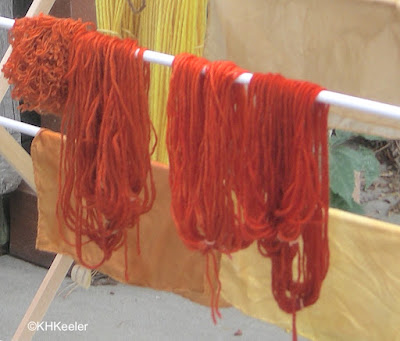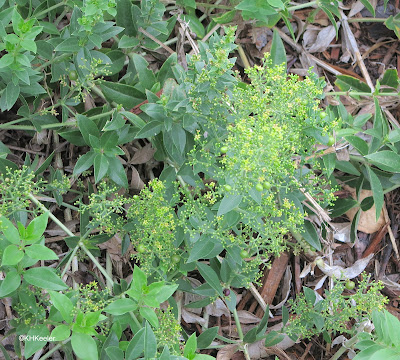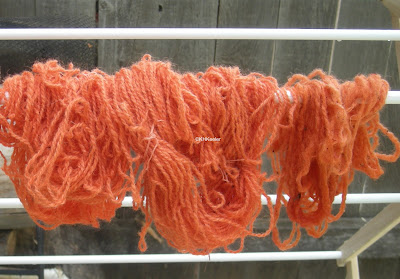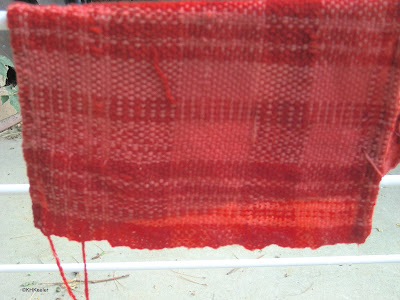Dyer's madder, Rubia tinctorum (madder and coffee family, Rubiaceae) was the base of most red cloth in Eurasia for millennia.
 |
| dyer's madder, Rubia tinctorum |
 |
| wool dyed red with madder Rubia tinctorum |
 |
| madder Rubia tinctorum |
Dyer's madder is easy to grow in most temperate climates. It spreads vigorously from rhizomes. Generally it is worth waiting two or more years to harvest the roots for dyeing; they are bigger and contain more of the dye. Traditionally they were harvested in the fall. First quality madder was called crap or the best crap. (From old German, where Krapp is still the word for madder. The term crapper for toilet and crap for shit are 1900s American slang). Some dyes must have been a surprise to the people who discovered them. The bright orange roots of madder clearly suggest trying them for dye.
 |
| fresh madder roots |
 |
| sprawling branch of madder Rubia tinctorum |
Perhaps you noticed that madder spreads easily. Yes, it is a garden thug. It will energetically move into adjacent flower beds. However, despite producing fruit, mine doesn't self-seed, so it is only neighboring flower beds that it invades and smothers. Madder has tiny teeth all along its stems, so working near it without gloves will cut up your hands and arms.
The flowers are small and yellowish. The fruit are small balls, becoming blue-black when ripe.
 |
| flowers, madder Rubia tinctorum green fruit in lower right, ripe black fruit above the word Rubia |
You wouldn't grow it for its flowers, but is a very satisfying dye plant. A cup or so of roots in a gallon of water will produce an intense color, especially on silk and wool. Whether you easily get red or orange is a function of the dye bath conditions and maybe the strain of madder. With my western water, rather alkaline, beautiful brick red-oranges are easy, truer reds more difficult. All madder starts off with a lot of yellow from secondary dyes in the roots. The first use of the dyebath usually takes them out and the next things dyed are more orange or redder. It is an art.
 |
| wool dyed orange with madder |
Madder roots' chemical composition includes five or more dye molecules, allowing a skilled dyer to produce colors from golden yellow to crimson to dark rust from madder. In addition, madder-dyed cloth can be overdyed or madder dye combined with other plant dyes to produce pinks, oranges, purples, browns, and blacks. A rainbow in the form of one easily-grown plant.
 |
| cloth dyed with madder Rubia tinctorum Cloth woven into a plaid with alternating stripes of wool and cotton, to show how the two fibers take up dye differently: the brighter red is wool. |
Wow! Nature never ceases to amaze me. I learn something new every time I go in my garden. This was an amazing article. I will definitely be experimenting with dyeing with this plant. I will continue to learn!
ReplyDelete